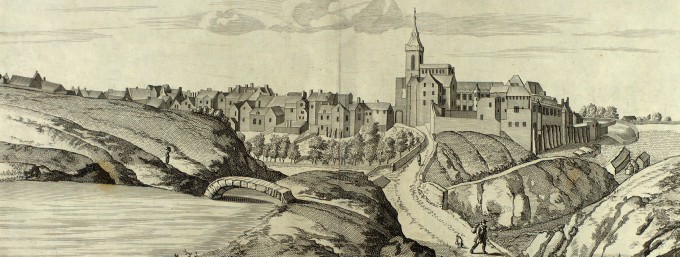Early one morning, any morning, we can set out, with the least
possible baggage, and discover the world.
So begins the brilliant ‘In Praise of Walking’, by Thomas A. Clark, a poem I’d heartily recommend to anyone. But what kind of world can we discover? That’s a writer’s question, to some extent – the suspicion that discovering means making as well as finding, that discoveries are stories we tell as well as brute facts on which we stub our toes.
Ben Jonson – him again – was keen on the idea of ‘discovery’, an idea he associated with ‘invention’, which in his day meant something less obviously mechanical than it does now. Invention was a writerly skill, but it involved the assured deployment of what you’d inherited or found, dug up in the books you’d read, rather than simply conjuring something out of thin air. Jonson saw himself as living and writing ‘tanquam explorator’, in the manner of a scout, following and making tracks.

Jonson was a walker, too, of course – going on foot from London to Edinburgh in the summer of 1618, an escapade I’ve been banging on about for a few years now. In that regard he’s like any number of other writers, who’ve long understood the useful connections between these two arts. He wasn’t a walker like, say, Wordsworth or Coleridge – he wasn’t out there on his own, discovering something called Nature, so the world he discovered in his walking can’t have been the same as theirs. But neither was he a merely instrumental walker, keen to get from A to B as quickly and efficiently as possible. His genre of walking – passing through towns and villages, punctuated by stops at inns and visits to houses – is something else. And it was public, a walk to be seen and enjoyed as a kind of promenade performance before an ever changing audience.

Dunfermline from the west, by John Slezer, from Theatrum Scotiae
In chewing over these ideas, we’ve been thinking about how and whether we can manage to walk in the same way. And the best way to think it is to do it, so on Sunday 25 September we’re going to have a go. In collaboration with the wonderful folk from Forth Pilgrim, the Fife Psychogeographical Collective and Fire Station Creative, we’re going to walk from Culross Palace to Dunfermline Abbey – a route Jonson himself took almost exactly 398 years ago (yes, obviously a big anniversary), and now part of the Fife Pilgrim Way (that’s a genre of walk right there). We’re going to see what we discover, and we’re going to find out what helps us to know what that might be – stories, poems, songs, things we find along the way, the sounds and images of a sociable walk. If you’re free, come and join us – we’ll be gathering outside Culross Palace at 10.30, and ending up at the Fire Station in Dunfermline for a drink and a chat and a rest of the old feet at around 4. We’re a reasonably friendly bunch and we’d love to meet you. No worries if you want to just to turn up, but if you wanted to know more about the project, or further information on our route and itinerary, please contact me via Twitter or at james.loxley@ed.ac.uk, or my colleague Miranda at miranda.swift@ed.ac.uk.


Thank you for sharing your knowledge
Thank you for sharing great article.
I like your article.
Thank you for sharing this great article.
Thank you for sharing this great article.